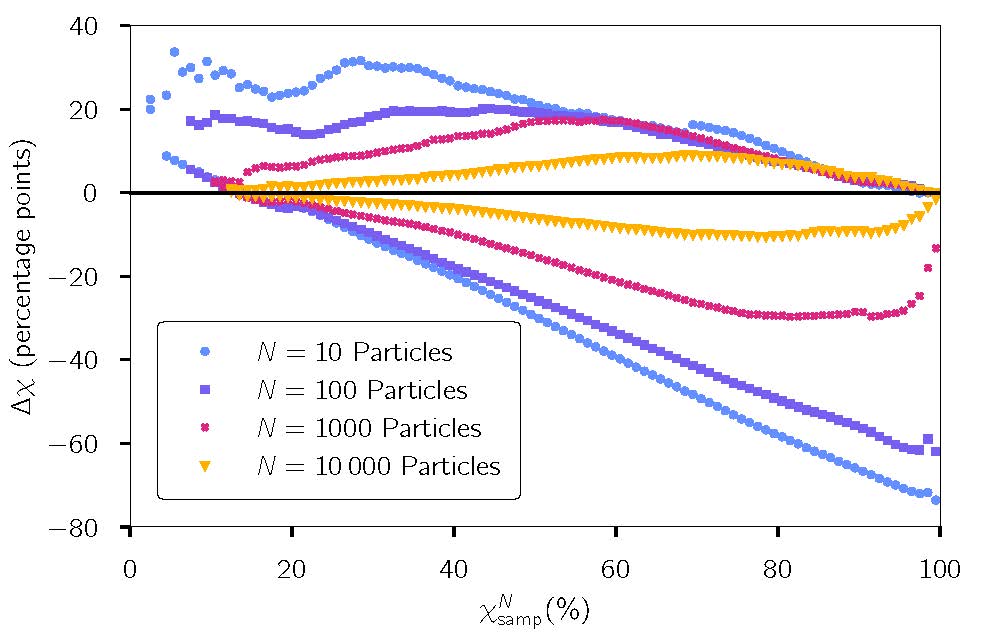How many particles do we need to measure aerosol mixing state?
Submitter
Riemer, Nicole — University of Illinois Urbana-Champaign
West, Matthew — University of Illinois at Urbana-Champaign
Area of research
Aerosol Properties
Journal Reference
Science
Single-particle instruments are used in many field campaigns to measure the detailed chemical composition of individual aerosol particles in the atmosphere. The question arises of how many particles do we need to sample to accurately characterize how the chemical species are distributed between particles? In this study we answered this question by using a large ensemble of simulations with the particle-resolved model PartMC-MOSAIC.
Impact
Aerosols are complex mixtures, with different particle types combining in a population, and different chemical species making up each particle. The exact way different chemical species are mixed within an aerosol, called the aerosol mixing state, determines aerosol-cloud-radiation interactions. It is of particular interest in both the modeling and measurement community for studying aerosol transformation and climate impacts. Here we quantified the error that is introduced by determining mixing state with a limited particle sample size. To determine the mixing state index within a range of +/- 10 percentage points requires a sample size on the order of 10,000 particles.
Summary
Several field studies have used the mixing state metric "chi" to quantify aerosol mixing states for different ambient environments using sophisticated single-particle measurement techniques. Inherent to these methods is that a finite number of particles, ranging from a few hundred to thousands of particles, are used to estimate the mixing state metric. In this study we evaluate the error that is introduced in calculating chi due to a limited particle sample size. We used the particle-resolved model PartMC-MOSAIC to generate a scenario library that encompasses a large number of reference particle populations and that represents a wide range of mixing states. We stochastically sub-sampled these particle populations using sample sizes of 10 to 10,000 particles and recalculated chi based on the sub-samples. This procedure mimics the impact of only having a limited sample size as it is common in measurement applications. The finite sample size leads to a consistent overestimation of chi, meaning that the populations appear more internally mixed than they are in reality. These findings are experimentally confirmed using single-particle SP-AMS measurement data from the Pittsburgh area. We also determined confidence intervals of chi for our sub-sampled populations. To determine chi within a range of +/- 10 percentage points requires a sample size of at least 10,000 particles.



